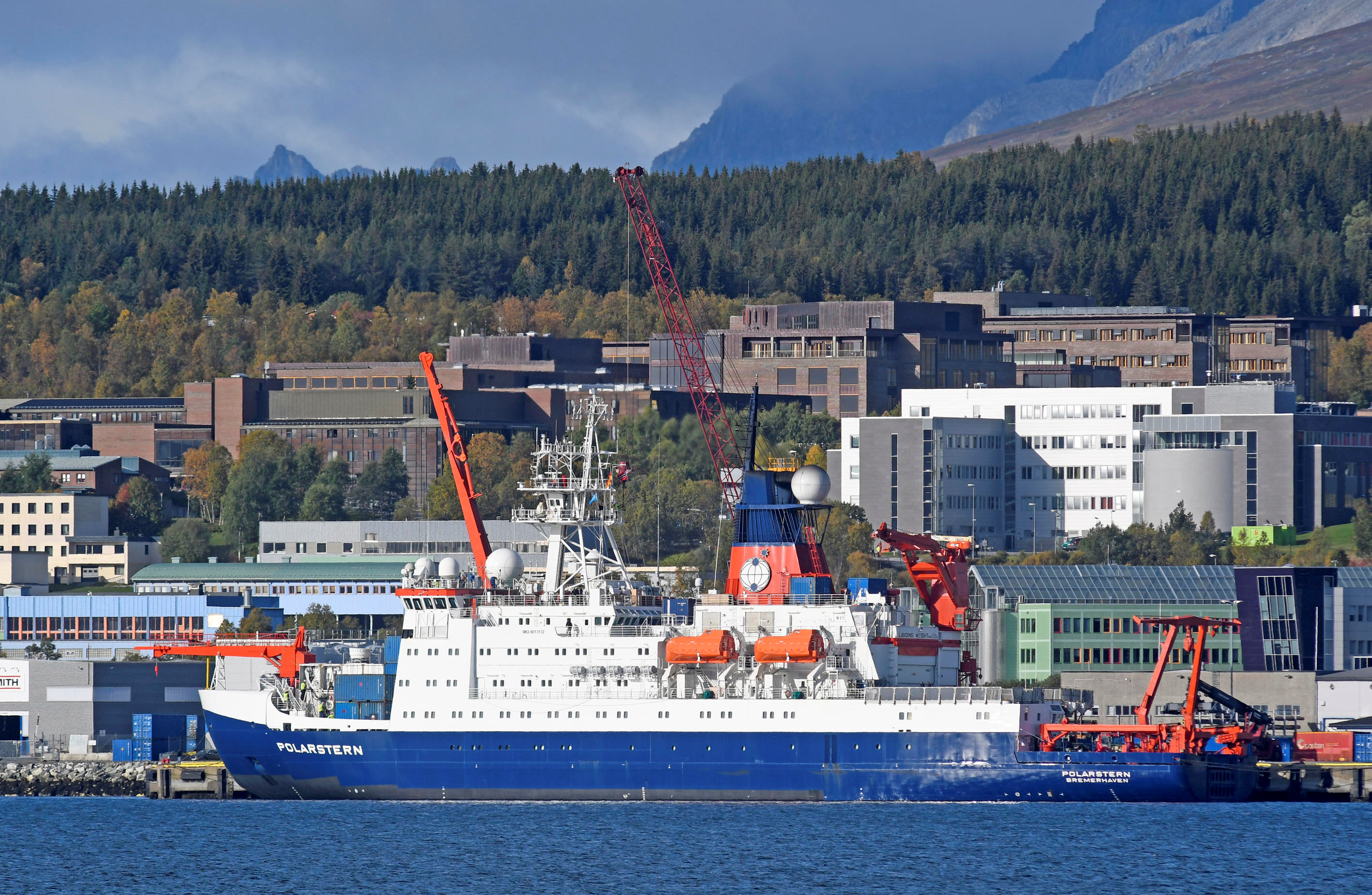By drifting, icebound, through the Arctic, an new expedition is following the great Fridtjof Nansen
With MOSAiC, the icebreaker Polarstern takes a path charted — and inspired — by the Norwegian explorer's Fram.

Never before has a modern icebreaker with sophisticated technology been set up to spend the winter drifting near the North Pole in the interest of science.
The German icebreaker Polarstern, soon to be locked in the Arctic ice for a year, is home to the largest polar expedition in history — the Multidisciplinary drifting Observatory for the Study of Arctic Climate, or MOSAiC for short.
Once it is icebound, the ship is expected to drift about 7 kilometers a day.
While the ship spotted ice Wednesday, it will continue toward the Central Arctic for another week or so until the open water ends.
As the scientists from around the world prepare for winter, they draw inspiration and encouragement from many sources, one of which is the legacy of the great Norwegian scientist and explorer, Fridtjof Nansen.
“Nansen plays a special role for MOSAiC as we are literally following his path,” Matthew Shupe, a senior research scientist and co-coordinator of the expedition says.
Writing by text message from the ship Wednesday, he said the Polarstern left from Tromsø, the same port as Nansen, and is attempting to follow his path, drifting in the ice.
From 1893-96, Nansen led an expedition in which his vessel, Fram, was frozen into the Arctic ice and carried across the top of the world.
The idea, Nansen wrote later, had been based on the discovery that wreckage from the vessel Jeannette, which sank off the coast of Siberia in 1881, were found three years later near Greenland—meaning that the ice had drifted nearly 3,000 miles in three years.
“It immediately occurred to me that here lay the route ready to hand. If a floe could drift right across the unknown region, that drift might also be enlisted in the service of exploration — and my plan was laid,” he said in an 1890 speech.
Nansen believed that a small, strong ship with a curved hull would be pushed up by the ice instead of being crushed to pieces. It would carry a total crew of 13 and provisions for five years.
The knowledge gained about the ocean during the experience was far more important in the long run than Nansen’s failure to reach the North Pole.
“The Fram has borne the ice-pressure splendidly, and allows herself to be lifted by it without so much as creaking, in spite of being more heavily loaded with coal, and drawing more water than we reckoned on when we made our calculations; and this after her certain destruction and ours was prophesied by those most experienced in such matters,” he wrote later.
Nansen, who died in 1930, received the Nobel Peace Prize in 1922 for his humanitarian work helping refugees from World War I.
Among his many accomplishments was the authorship of “Farthest North,” a classic tale of the expedition that drifted with the ice pack.
“Nansen, in his time speculated about how the ice might drift across the Arctic, but it wasn’t really known to be true until his voyage with the Fram demonstrated the process. Now, of course, it is something we know well. And following that course is kind of necessary if we want a year in the ice and also access to young ice,” Shupe said.
Shupe, a specialist in atmospheric science, works at the Cooperative Institute for Research in Environmental Science. His research on MOSAic is funded by the U.S. National Science Foundation and the Department of Energy.
Shupe said Nansen was not just an explorer, but a careful scientist who took precise measurements and compiled systematic records that remain valuable.
It was “really amazing and inspiring what he was able to accomplish back in that day,” he said Wednesday.
“Tonight we had a nice science discussion about some of Nansen’s measurements of temperature, trying to understand how they could be true in the face of what we know today about the behavior of ice and thermal conductivity, etc.”
“It has now become known as the ‘mystery of -53C,’” and we will seek to understand it before we leave.
“Lastly, Nansen embodies the adventurer’s spirit. We are all out here on this expedition. Some of us know what to expect, while others are immersed in it all for the first time (we just entered the ice for the first time today, treated by a polar bear near the ice edge). But for all of us, it is adventure. It is about as far out there as you can get on the globe.”
“We might be the furthest isolated group of humans (even the International Space Station is closer to other population centers). While the details have certainly changed in the 125 years since Nansen, the spirit of adventure and the love of probing the unknown as still alive and well out here.”
Dermot Cole can be reached at de*********@gm***.com.